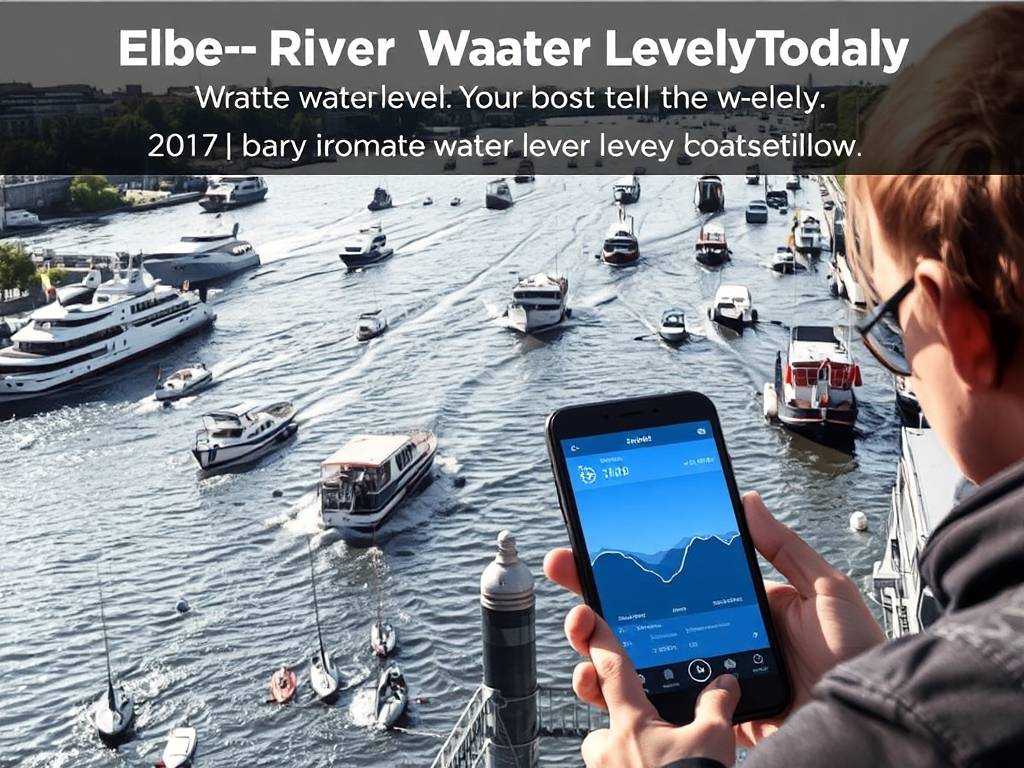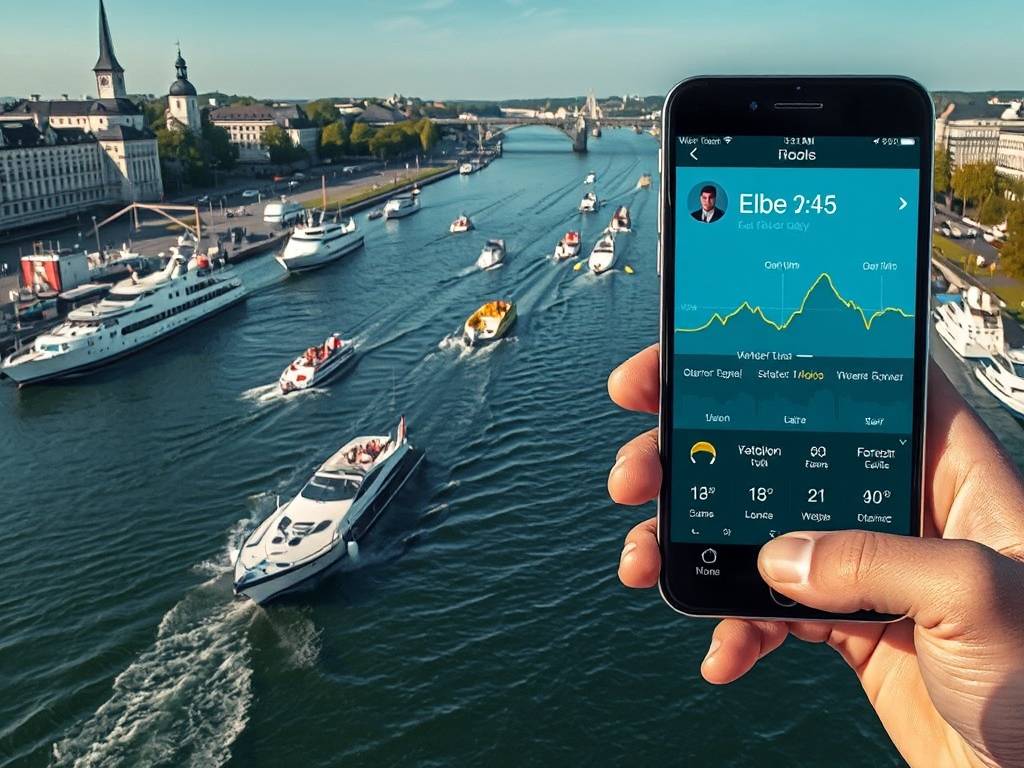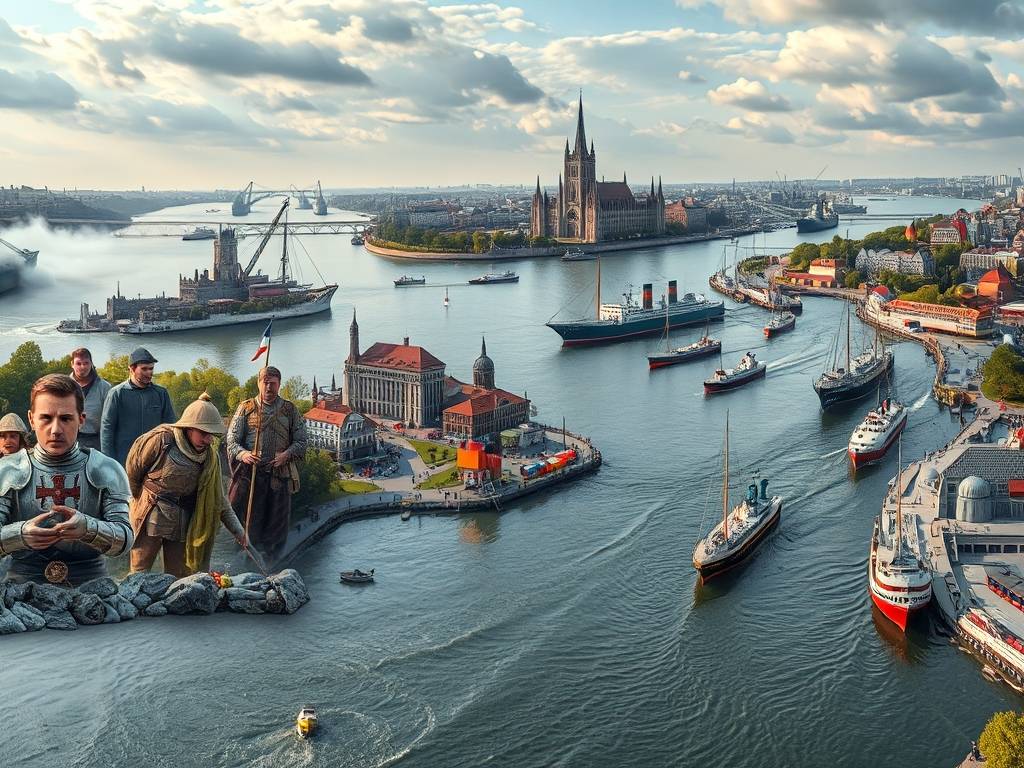Global Travel Information
Elbe River Water Level Today: Real-Time Updates for Boaters
Elbe River Water Levels: Your Live Guide for Safe and Smooth Boating
Ah, the Elbe River. Stretching from the Czech Republic's majestic mountains to Germany's North Sea coast, it's a boater's paradise. Whether you're at the helm of a sleek yacht, navigating a sturdy cabin cruiser, or enjoying a leisurely day on a rented motorboat, the river offers an unparalleled journey through the heart of Europe. But every seasoned captain and enthusiastic novice knows one thing: the river has a mind of its own. Its mood is dictated by its water level, and knowing the Elbe river water level today isn't just a piece of data—it's the key to your safety, your schedule, and your peace of mind.
This guide is your one-stop resource for understanding, accessing, and interpreting the real-time water level of the Elbe River. We’ll dive deep into where to find the most accurate live Elbe River water level data, how to decipher those sometimes cryptic gauge readings, and what it all means for your boating adventure. Let's ensure your next trip is memorable for all the right reasons.

Why Water Levels are Your Most Important Co-Pilot
Before we check the numbers, let's understand why they matter so much. The Elbe water level for boat navigation is a critical safety parameter. It directly impacts:
- Draft and Under-Keel Clearance: This is the big one. The water level determines how deep your boat can safely go without running aground. A sudden drop in levels can turn a navigable channel into a hazardous sandbank.
- Bridge Clearance: On the flip side, high water levels can reduce the air draft—the clearance under bridges. This is especially crucial for sailing boats with tall masts.
- Current Speed: High water levels often mean a stronger, faster current. This affects your fuel consumption, steering control, and the time it takes to reach your destination. It can make docking and maneuvering in tight spaces significantly more challenging.
- Hazard Visibility: Submerged logs, rocks, or other debris become more or less visible depending on the water level. Low levels might expose them, while high levels can hide them just below the surface.
- Lock and Weir Operations: The operation of locks and weirs is meticulously managed based on water levels. Extreme conditions can lead to operational changes or closures, disrupting your travel plans.
Simply put, ignoring the current Elbe River depth for vessels is not an option. It’s the first item on your pre-departure checklist.
Your Go-To Sources for Live Elbe River Water Level Data
Thankfully, in our digital age, getting accurate Elbe River gauge readings is easier than ever. Here are the most reliable sources for boating safety on the Elbe with water levels:
-
The German Federal Waterways and Shipping Administration (WSV): This is the gold standard. Their official website, pegelonline.wsv.de, is the authoritative source for real-time water level monitoring for the Elbe. The site provides live data from dozens of gauging stations along the entire river. The interface is available in German and English, showing you the current water level in centimeters, the trend (rising, falling, or steady), and often the discharge rate. Key stations to watch include Dresden, Magdeburg, Wittenberge, and Hamburg.
-
Elbe Navigation Apps: Several dedicated mobile apps aggregate this official data into a boater-friendly format. They often include features like setting alerts for specific water level thresholds at your chosen stations, which is invaluable for planning a boat trip on the Elbe with fluctuating water levels. Search for "Elbe Pegel" or "Binnenwasserstraßen" in your app store.
-
Local Harbor Masters and Marinas: Never underestimate the value of local knowledge. A quick call or visit to the harbor master at your departure point or destination can provide not just the raw numbers, but also practical insights. They can tell you about local hazards, current conditions that might not be fully reflected in the data, and advice from other boaters who have just come in.
Cracking the Code: How to Interpret Gauge Readings for Safe Passage
You’ve found the data, but what does it actually mean? Seeing "342 cm" at the Dresden gauge is just a number until you know how to interpret it. Here’s a practical breakdown for navigating the Elbe River with low water levels and high water levels.
Understanding the "Pegel" (Gauge): The measurement is not the actual river depth. It's a standardized reading from a fixed gauge zero point. The key is to understand the reference points for navigation:

-
Low Water (Niedrigwasser): This is the primary concern for most boaters. The official "GlW" (Gleichwertiger Wasserstand) is a statistically determined low-water level. When levels approach or fall below this mark, navigation restrictions often come into effect. For ensuring vessel clearance on the Elbe waterway, you must know your boat's draft and add a safety margin of at least 20-30 cm. If the gauge reading is only 50 cm above the GlW, and your draft is 1.2 meters, you are in a danger zone.
-
High Water (Hochwasser): The WSV defines specific flood stages (Meldepegel, Alarmpegel, etc.). When these are reached, the river may be closed to all recreational traffic. High water means powerful currents, floating debris, and difficult docking.
A Practical Scenario for Boaters: Let's say you're planning a journey from Magdeburg to Hamburg. Your cabin cruiser has a draft of 1.3 meters.
- Check the Gauges: You check pegelonline.wsv.de and see that the Magdeburg gauge reads 220 cm. The GlW (low water reference) for Magdeburg is 150 cm. This means you have a "buffer" of 70 cm above the low-water line. This is generally considered adequate for your draft, but you must continue monitoring the trend. Is it falling rapidly? If so, you might face issues further downstream.
- Check the Trend: The trend arrow is pointing down. This indicates falling water levels, a classic sign for navigating the Elbe River with low water levels. You need to be extra vigilant and plan for the possibility of grounding in shallow areas.
- Check Downstream: You then check the gauges at Wittenberge and Hamburg. If they are significantly lower, you know the challenging conditions will continue.
Proactive Planning: What to Do When Levels are Extreme
Dealing with Low Water:
- Reduce Load: Lighten your boat. Take on less water and fuel if possible, and ensure weight is distributed evenly.
- Travel Mid-Channel: The deepest part of the river is usually in the center of the navigable channel. Avoid cutting corners on bends.
- Slow Down: A slower speed can help you "plane" over very shallow areas and gives you more time to react if you do touch bottom.
- Have a Plan B: Identify marinas or safe anchorages along your route where you can wait out a period of critically low water.
Dealing with High Water:
- Postpone Your Trip: This is often the safest advice. The risks of high water—strong currents, debris, and limited control—are significant.
- Reevaluate Your Route: Some sections of the river, especially those with strong currents near bridges or locks, become exceptionally dangerous.
- Secure Your Dock Lines: If you are already at a marina, double up your lines and add fenders to account for the rising and falling levels and increased wake from passing ships.
Beyond the Numbers: Tides on the Lower Elbe
A unique factor for boaters heading towards the North Sea is the tidal influence. Downstream from Geesthacht (near Hamburg), the Elbe is a tidal river. This means the real-time water level of the Elbe here is a combination of the freshwater flow from upstream and the tidal surge from the sea.
- Tidal Charts are Essential: You must consult tidal predictions for Cuxhaven and Hamburg. Timing your passage with the rising tide (flood) can give you a helpful boost in speed and ensure better water depth.
- Tidal Currents: The strength of the current can reverse with the tide. Navigating against a strong ebb tide (outgoing) can drastically increase your travel time and fuel consumption.
- Combined Effects: A period of high water from upstream combined with a high spring tide can lead to exceptionally high water levels and dangerous conditions.
Conclusion: Knowledge is Your Best Anchor
A successful and enjoyable journey on the Elbe is built on a foundation of knowledge. By making a habit of checking the Elbe river water level today, understanding what those accurate Elbe River gauge readings mean for your specific vessel, and respecting the power of the river, you transform from a passive passenger into a confident captain.
Bookmark the official WSV website, download a reliable app, and always, always talk to local experts. The river is a dynamic and beautiful force of nature. With the right preparation and a keen eye on the live Elbe River water level data, you're all set for a fantastic voyage. Now, go forth and enjoy the magnificent scenery, the historic towns, and the pure joy of boating on one of Europe's great waterways. Fair winds and following seas
相关文章
- Elbe River Length & Source: Key Geographic Facts
- Cities Along Elbe River: Must-See Destinations in Germany
- Elbe River Historical Significance: Key Events Through Time
- Elbe River Cycling Routes: Explore by Bike This Year
- Elbe River Wildlife Watching: Where to Spot Birds & Animals
- Elbe River Local Festivals: 2025 Events Not to Miss
- Elbe River Accommodation: Best Hotels Near the Water
- Elbe River Fishing Spots: Permits & Top Locations
- Elbe River Castles & Palaces: Historical Sites Along the Banks
- Elbe River Transportation: How to Get Around Easily
发表评论
评论列表
- 这篇文章还没有收到评论,赶紧来抢沙发吧~


